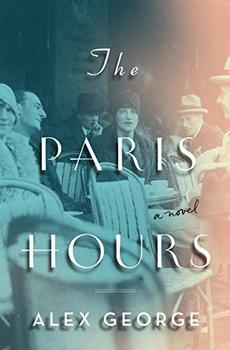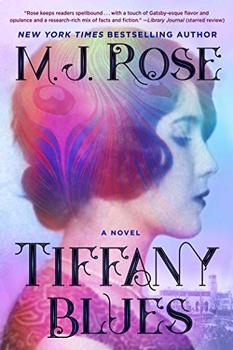Summary | Excerpt | Reading Guide | Reviews | Beyond the book | Read-Alikes | Genres & Themes | Author Bio

A richly imagined and stunningly inventive literary masterpiece of love, art, and betrayal, exploring the genesis of evil, the unforeseen consequences of love, and the ultimate unreliability of storytelling itself.
Paris in the 1920s shimmers with excitement, dissipation, and freedom. It is a place of intoxicating ambition, passion, art, and discontent, where louche jazz venues like the Chameleon Club draw expats, artists, libertines, and parvenus looking to indulge their true selves. It is at the Chameleon where the striking Lou Villars, an extraordinary athlete and scandalous cross-dressing lesbian, finds refuge among the club's loyal denizens, including the rising Hungarian photographer Gabor Tsenyi, the socialite and art patron Baroness Lily de Rossignol; and the caustic American writer Lionel Maine.
As the years pass, their fortunes - and the world itself - evolve. Lou falls desperately in love and finds success as a race car driver. Gabor builds his reputation with startlingly vivid and imaginative photographs, including a haunting portrait of Lou and her lover, which will resonate through all their lives. As the exuberant twenties give way to darker times, Lou experiences another metamorphosis - sparked by tumultuous events - that will warp her earnest desire for love and approval into something far more.
...the stories ensue with a medley of deliciously unreliable narrators told, by turns, in the unique voices of Yvonne and Gabor, of his patron, wealthy baroness Lily De Rossignol, of Lionel Maine, and of Gabor’s wife, Suzanne and her niece, Lou’s biographer. Honestly, Prose’s writing is so striking in its own chameleon-like ability to adjust to the diverse points of view and voices that that quality alone makes this a worthwhile read...continued
Full Review
(586 words)
This review is available to non-members for a limited time. For full access,
become a member today.
(Reviewed by Donna Chavez).
 In Lovers at the Chameleon Club, Paris 1932, Francine Prose bases the character Gabor Tsenyi on real life photographer Gyula Halász. Known by the pseudonym Brassai, Halasz was born in 1899 in the Transylvanian (later Hungary, now Romania) city of Brasso. His father was a university professor of French literature and their family spent some time living in France, where Brassai eventually emigrated in the 1920s in order to pursue a career as a journalist. He started taking photos as a way to supplement his freelance income.
In Lovers at the Chameleon Club, Paris 1932, Francine Prose bases the character Gabor Tsenyi on real life photographer Gyula Halász. Known by the pseudonym Brassai, Halasz was born in 1899 in the Transylvanian (later Hungary, now Romania) city of Brasso. His father was a university professor of French literature and their family spent some time living in France, where Brassai eventually emigrated in the 1920s in order to pursue a career as a journalist. He started taking photos as a way to supplement his freelance income.
While in Paris he lived in the famous Montparnasse quarter among such bohemian greats as Henry Miller, Pablo Picasso, Salvador Dali and Jean Genet. He eventually began to devote himself entirely to photography and ...
This "beyond the book" feature is available to non-members for a limited time. Join today for full access.

If you liked Lovers at the Chameleon Club, Paris 1932, try these:

by Alex George
Published 2021
Told over the course of a single day in 1927, The Paris Hours takes four ordinary people whose stories, told together, are as extraordinary as the glorious city they inhabit.

by M.J. Rose
Published 2019
The New York Times bestselling author of The Library of Light and Shadow crafts a dazzling Jazz Age jewel—a novel of ambition, betrayal, and passion about a young painter whose traumatic past threatens to derail her career at a prestigious summer artists' colony run by Louis Comfort Tiffany of Tiffany & Co. fame. "[M.J. Rose] transports the ...
We must believe in luck. For how else can we explain the success of those we don't like?
Click Here to find out who said this, as well as discovering other famous literary quotes!